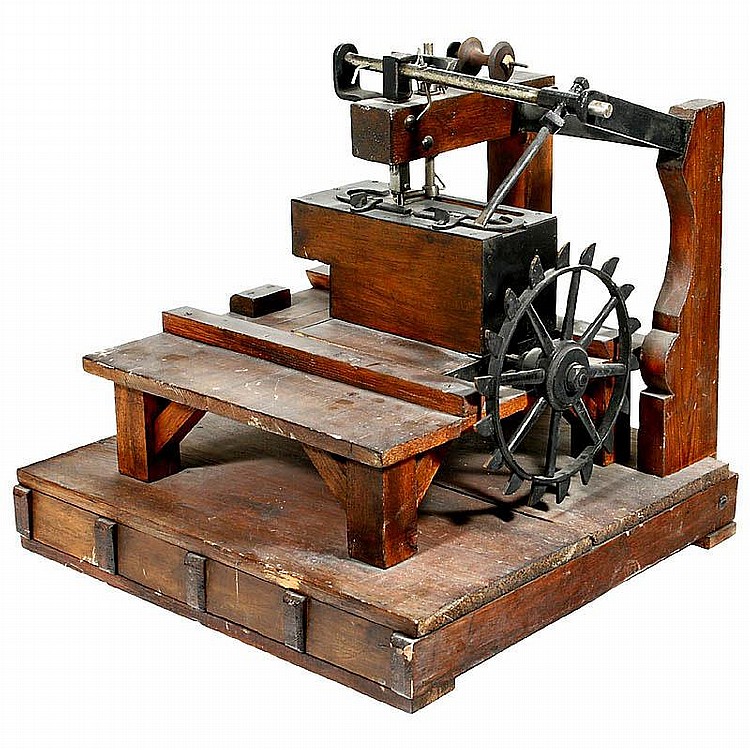
Thomas Saint’s Sewing Machine (https://www.madeupinbritain.uk/Sewing_Machine)
In 1790, Englishman Thomas Saint filed a patent (No. 1764) for a machine that did quilting, stitching, sewing, and for making clothes. Saint was a London cabinet maker whose patent focused on sewing leather, as his patent included making shoes, boots, spatterdashes, clogs, and other articles. The machine took a chain stitch approach.
However, the patent was not broadly discovered until some 80 years later when William Newton Wilson rebuilt the machine, demonstrating the design was effective.
By the 1830s, credit for the invention of the sewing machine bestowed on a couple of inventors in Boston and one in France. Whether these inventors knew anything about Saint’s design, there would be similarities between Saint’s patent and modern machines:The Romance of Industry and Invention (1897)











